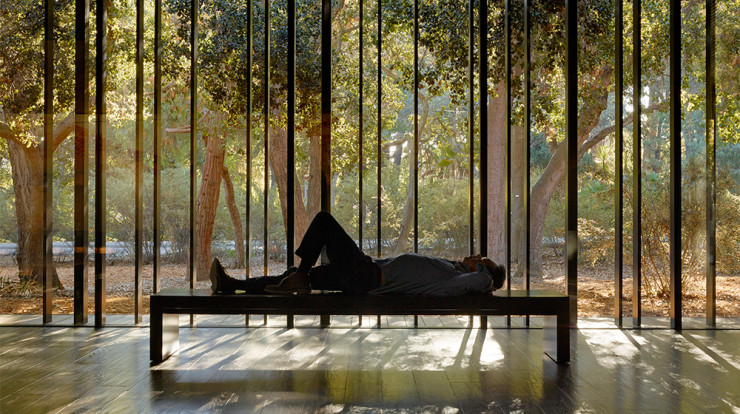How to Bring Nature Indoors to Improve Your Well-Being

How to Bring Nature Indoors to Improve Your Well-Being
2020 has been a year of change and challenges, much of which has seen us spending even more time in our homes than ever before. For months, parks, beaches, playgrounds, and nature preserves have been closed. That is why it is more important now than ever before to bring nature indoors.
Bringing the outdoors in goes well beyond buying a potted plant that you stick in the corner of a room. In our recent blog about biophilic design, we discussed the importance of incorporating the natural world into our home and even workplace environments. Anywhere that you spend a considerable amount of time can benefit from natural décor.
Biophilia is a desire to interact with nature, and never has it been so critical to our well-being as it is right now. Biophilic design helps us reduce stress, improve our health, creativity, productivity, and emotional well-being.
While the best way to maximize biophilic design elements in your home or workplace is with the help of an interior designer, there are things you can do right now to increase the natural beauty around you.
Physical Ways to Bring Nature Indoors
When you think about the physical ways to bring nature indoors, chances are the first things that come to mind are living things, such as plants. One potted plant will not do the trick – think big and fill your home with nature. Grow herbs on a windowsill, bring in some potted lemon or lime trees, cacti, or create terrariums throughout your home. Incorporate plants in every room of your home. Turn your bathroom into a spa with plants that thrive in humidity.
A vertical garden feature that many people overlook is a green wall – a living wall of plants. Some people even have trees growing inside and up through their homes. Of course, taking it to that large a scale may be best done with the help of an interior designer.
Utilize other aspects of nature in your interior design ideas, such as seashells, twigs, branches, rocks, and gems. There is a reason why so many people have those little Zen gardens on their desks at work. Raking sand and creating designs with rocks and gems is an excellent way to de-stress. You can even create your own with items in your home and a small bottle of sand from a store. (Be careful about removing sand from a beach – many places will fine you for that!)
Nature is also more than plants. It encompasses all living things. A pet is more than your best friend – it is a natural de-stressor. Fish tanks, birdcages, outdoor animal feeders, and butterfly gardens are excellent options for helping you connect with other living things.
Think Outside the Box to Bring Nature Indoors
What does “thinking outside the box” mean when we want to incorporate biophilic design principles in the home or office?
It means incorporating other elements such as light, air, sound, fire, weather, natural materials, and natural landscapes into your home.
Here are some things to consider:
- You can bring nature indoors by adding skylights, reflective materials, and sheer drapes that allow the sun to shine through and illuminate your environment. An added benefit of letting nature shine through is also bringing you closer to the aspects of weather. After all, who does not enjoy sitting in a cozy chair while watching it rain outside?
- One way of incorporating naturalistic interior design is with the sounds of nature. Water elements such as fountains, water walls, and aquariums are not only relaxing to look at, but the sound of the water flowing, or bubbling can improve health and reduce stress.
- Fire pits outdoors do more than provide beauty and warmth. The fire element is also crucial to health. Candles have long been associated with romance and can bring an element of nature into your home.
- Natural materials are some of the best ways to foster biophilic design as you have many options available. Wood, stone, bamboo, leather, wool, hemp, clay, wicker, rattan, granite, and cork are available for various areas of your home or office, including flooring, furnishings, and countertops. The unique textures associated with materials such as cork or bamboo bring you closer to nature.
- Utilize natural landscapes as a way to relax and improve your health. From pictures of nature to nature-identical designs done in patterns on the walls, flooring, and fabrics, these images help to foster improved well-being.
Other Ways of Bringing Nature Into Your Home
The list of modern design elements available to help you bring nature indoors is endless. Here are a few more ideas:
- Incorporate natural design elements that activate the senses, such as varying types of textures.
- Bring in the colors of nature wherever possible. Incorporating the blue sky, green grass, brown earth, and cream sand colors will help you get in touch with the many elements around us.
- Do not stop with the inside of your home. Turn your patio, balcony, or garden into a natural haven with plants, water elements, and more to help you de-stress.
Today’s modern interior design options can help make your home a healthier place to live. There are so many things we can do right now, even if you are still at home all day – every day.
When the time comes to take your environment to the next level, HK Interiors can help. Call 954-401-8542 today for more information.

